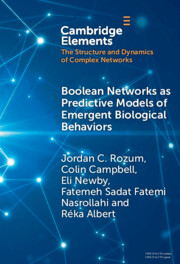Since the release of the Bio 2010 report in 2003, significant emphasis has been placed on initiating changes in the way undergraduate biology and mathematics courses are taught and on creating new educational materials to facilitate those changes. Quantitative approaches, including mathematical models, are now considered critical for the education of the next generation of biologists. In response, mathematics departments across the country have initiated changes to their introductory calculus sequence, adding models, projects, and examples from the life sciences, or offering specialized calculus courses for biology majors. However, calculus-based models and techniques from those courses have been slow to propagate into the traditional general biology courses. And although modern biology has generated exciting opportunities for applications of a broad spectrum of mathematical theories, the impact on the undergraduate mathematics courses outside of the calculus/ordinary differential equations sequence has been minimal at best. Thus, the limited interdisciplinary cross-over between the undergraduate mathematics and biology curricula has remained stubbornly stagnant despite ongoing calls for integrated approaches.
We think that this phenomenon is due primarily to a lack of appropriate non-calculus-based interdisciplinary educational materials rather than inaccessibility of the essential underlying mathematical and biology concepts. Here we present a module that uses Boolean network models of the lac operon regulatory mechanism as an introduction to the conceptual importance of mathematical models and their analysis. No mathematics background beyond high school algebra is necessary to construct the model, which makes the approach particularly appropriate for introductory biology and mathematics courses. Initially the module focuses on modeling via Boolean logic, Boolean algebra, discrete dynamical systems, and directed graphs. The analysis of the model, however, leads to interesting advanced mathematical questions involving polynomial ideals and algebraic varieties that are beyond the mathematical proficiency of most biology students but are of interest in advanced level abstract algebra courses. These questions can also be used to map a path toward further research-level problems. All computations are carried out by computational algebra systems and the advanced mathematical theory implemented by the software can be covered in detail in abstract algebra courses with mathematics students. Biology students and students in lower level mathematic courses, on the other hand, can view the implementation as a “black box” and focus on the interpretation and the implications of the output.
The module is available from the authors for classroom testing and adoption.
